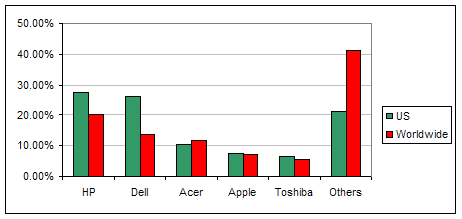Case Study Contents
- Introduction
- Dell – Company Overview
- Dell Products and Services
- Dell – Key Facts – Key Employees, Top Competitors, Revenues, Manufacturing Facilities
- Dell Timeline
- Dell – Business Segment Information
- Dell’s Evolving Supply Chain Strategy
- Typical Working of Dell’s Supply Chain
- Five key strategies in Dell’s successful Direct Model
- A supply chain with old technology is of little value
- Restructuring at Dell
- New Distribution Channels – Direct Model and Retail Strategy
- Integrating the Supply Chain
- Related Reading
- View sample pages of this case study
Case Study Abstract
The focus of this case study is the supply chain management practices of Dell. Dell has been following its unique ‘direct build-to-order’ sales model for more than 20 years. Customers can plan their own configuration and place orders directly with the company via the phone or its Web site. Over the years, Dell’s supply chain efficiencies and direct sales gave it a competitive advantage.
Can Dell regain its market leader position from HP?
In 2006 however, Dell faced several problems. Many customers complained about long delays in supplies. Recall of Sony battery cells in its laptops brought undesirable media hype to the company. Increasing discontent of customers led to a slowdown in sales. Consequently, Dell lost its market leadership to Hewlett-Packard Co. (HP). Industry analysts felt that, with Dell’s competitors also improving their supply chains and matching Dell’s direct model, the company had been losing its competitive edge. Dell will have to bear additional costs with its foray into retail distribution thereby minimizing its cost advantage. Besides, profit margins of Dell will drop further since it will have to offer incentives to compete with HP in retail stores. Though Dell spruced up its product design and range but Apple is clearly far ahead of it. Many experts feel that such new initiatives will only distract Dell from its supply chain operations.
This case study covers the following issues:
- Examine and analyze Dell’s Direct model, its basic working, success and future challenges
- Typical Working of Dell’s Supply Chain and future supply chain challenges
- Highlights Dell’s evolving Supply Chain practices and strategy and steps being taken by it to recapture its lost market leader position
Case Study Keywords: Dell, Direct model, Supply Chain Management, Supply Chain Strategies, Build-to-order model, Inventory optimization, PC Manufacturing, Retail Distribution Channel, HP, Notebook computers, Desktop personal computers, Competitive Business Strategies, Sustaining competitive advantage, Michael Dell, Distribution Strategy, Supply Chain Case Study
Case Snippets/Update
Dell’s market share in U.S. and Worldwide (in Q1 2009) compared to other top PC makers
- In year 2010, PC sales are expected to rise 12.6 percent, according to research firm Gartner.

